Strategy May 25, 2015
Shop Shakeup
Kelley and Kyle Waltz want to boost their profits and take their basement decorating business to the next level with the help of our experts.
It was the kind of nightmare order that makes a decorator question everything. A Las Vegas-area senior softball league had ordered custom shirts – a different design for each of its 14 teams. Kelley Waltz, owner of The T-Shirt Guy and Sparkly Tees (asi/530143), screen printed white artwork onto red shirts she’d never used before. After only a few washings, the print was already starting to fade, and the client told Waltz something she’ll never forget: “I like you, but I don’t like the shirts.”
Four years after launching her decoration business with the part-time help of husband Kyle, those stinging words made Kelley stop and take stock, eyeing the expensive equipment filling her Nevada basement. “I thought, ‘Why am I doing this? What am I doing? It’s so much work.’”
Though she’s shaken off the bad experience – redeeming herself with the unhappy client the following year by creating vinyl-cut designs that everyone in the softball league loved – the self-doubt has remained, as Kelley and Kyle try to figure out how to take their shop to the next level. As Kyle put it, “It just seems like we’re stumbling. When we talk to other screen printers, it sounds like they’re doing well and making more money.”
The T-shirt Guy came to life, almost by accident, half a decade ago: Kelley and Kyle had purchased a hobby screen-printing kit, thinking they could save a few bucks by printing T-shirts for their son’s Cub Scout troop. They soon had friends lining up with custom shirt orders of their own, and Kelley decided to quit her day job and give the home-based business a go. “I wanted to do something productive for my family, but still be at home,” she explains.
The business has continued to grow, especially after Kelley started Sparkly Tees,tapping into the lucrative bling trend by pitching glitter vinyl designs to the school and spirit niche markets. But last year was the first time the family business posted a profit – and only a slight one at that – and Kelley has found herself routinely working late into the night to keep up with orders. Overwhelmed and overworked, Kelley is hoping to find the key to unlocking the potential she knows the business has, and Kyle wants to bring in enough profit to justify leaving his programming job to help his wife full-time. “I feel like now we are just on the cusp of huge success,” Kelley says.
To help the Waltzes plot a profitable course into the future, Wearables turned to Arizona-based screen-printing expert Terry Combs. One half of the popular industry podcast “2 Regular Guys,” Combs offers hands-on and online classes, drawing from more than 30 years of experience in the apparel decoration world. After reviewing the Waltzes’ situation, Combs sees a lot of positive potential: Their dedication to providing quality products and service, and investment into multiple decoration techniques are particularly praiseworthy. “If you produce a quality product, you are going to be successful in this industry,” Combs says. “There are lots and lots of screen printers, but to be honest, there are not a lot of good ones.
“The sky is the limit for you.”
Schedule, Don’t Shuffle
One of the first areas Combs targets for improvement is the shop’s efficiency. Most shops, he says, are pretty good when it comes to the physical production process, but it’s the pre- and post-press functions that trip-up even multimillion-dollar print shops. Kelley, who’s always considered herself an organized person, says she jots notes in a small notebook and uses a system of clipboards to keep track of jobs, but she feels like she’s outgrown the clipboards and has trouble with big-picture scheduling. “I’m always just looking at what needs to be done tomorrow,” she says.
Combs developed his own system 30 years ago after too many restless nights, worrying about the next day’s work. The handwritten schedule, he says, is old-school, but effective. He recommends assigning every specific task in a job – from setup to tear-down – a time value, then including those calculations when you write out an order. Once you know those values, a shop manager can begin deducting each job from the total available production time and plan out a realistic weekly schedule ahead of time. “Most screen printers, their production scheduling is, ‘How soon do you need it?’” Combs says. “Then you’re in a production shuffle, not production scheduling. If you schedule, you can flip open the book and tell customers when they can have it.”
On the Dots
Combs also has a suggestion on how the Waltzes can step-up the quality of their screen-printing game. Right now, the couple focuses much of their business-building efforts on the glitter vinyl side of the business. When it comes to screen-printing, they rarely take on orders more complicated than one- or two-color prints on their six-station manual press. “The most we ever did was a four-color design, which went fine, but took a while,” Kelley says. “After printing 300 shirts, my arms were falling off.” She adds that she tends to steer clients to fewer colors to help them keep their costs down.
The Waltzes are on the right track, Combs says, noting that one- and two-color jobs are the “bread and butter” of the industry. However, he recommends they upgrade their equipment, and buy an inkjet printer with Raster Image Processor (RIP) software, so they can create more complicated prints using halftones – a series of large and small dots that resemble shading from a distance. “Using halftones will take you to another level. It’s really going to make your images pop,” Combs says. “An $800 investment will go a long way for you.”
Combs has a formula to help printers determine what size dots match up best with the mesh size of their screens. Generally, he says, printers should use, at minimum, a 230 thread-per-inch mesh screen to “hold the dots” on a 55 dot-per-inch design – the size commonly used for simulated process color.
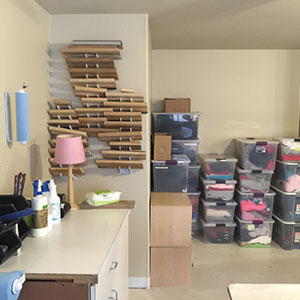
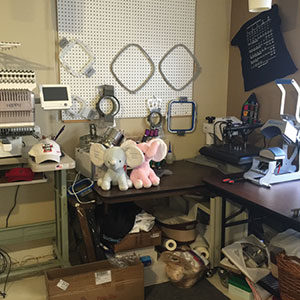
Build a Market
Marketing is another place where Kyle and Kelley struggle. Rather than develop a strategic plan, they’ve dabbled here and there in an assortment of moneymaking ventures, with varying levels of success. On the plus side is an area PTA convention that always brings in significantly more revenue than the $500 they pay to set up their booth. “It’s really a no-brainer,” Kelley says. Another win, Kyle says, has been a regional gymnastics meet. The couple brought their cutter and an array of vinyl and blank garments to the three-day event, customizing several stock gymnastics designs on-demand. They made $2,000 over three days, double what they brought in the first year they attended, Kyle says.
Other events, though, proved to be busts, like the Christmas craft fair where the Waltzes set up a vendor booth. They churned out about 200 holiday-themed shirts ahead of time, but only sold four. “Now we have a lot of Christmas shirts,” Kelley quips.
Combs encourages them to “create a market where no market exists.” Like the time the local high school football team won the state championship and Combs whipped up some custom shirts, drove to the school and gave them out to the cheerleaders. He then offered the grateful squad a fundraising proposition: a dollar back for every shirt order they took. By the end of the week, the cheerleaders had sold 500 shirts. “They made $500; they were thrilled,” Combs says. “I made more than that; I was thrilled.”
It’s also important to promote your business all the time, he adds. Throw in a free self-promo hat with every order. Not only does it build customer gratitude and remind them of your diverse decoration offerings, they’re providing free advertising if they wear the cap around town. Combs also recommends putting together a marketing packet with a logoed sample shirt, price list and business card in a clear plastic bag and keeping a few on hand at all times. If someone mentions shirts, hand them a packet. “If you don’t have customers right now,” he says, “then you are keeping what you do a secret.”
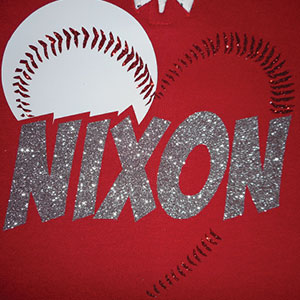
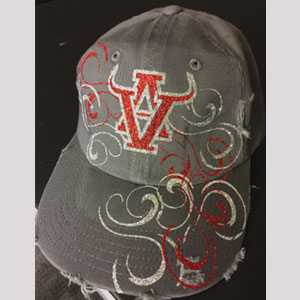
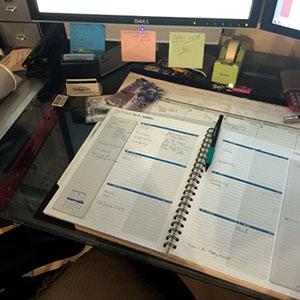
Full Speed Ahead
A month after their first consultation with Combs, Kelley and Kyle have already made some changes to their business. Most notably, Kelley bought a weekly planner and started scheduling on Sunday nights, assigning each task a time value, then reconfiguring if a certain step took more or less time than she’d anticipated. “I’m actually a day ahead of schedule, which hasn’t happened in months,” she says. Plus, she’s been able to call it quits at 5 p.m. every evening, rather than 10 or 11 that night. “I’m not as stressed out,” she adds.
The couple has also started decorating self-promotional hats to give away with orders and has been wearing them around town – eliciting inquiries from interested passersby. “That’s awesome,” Combs tells them. “The business is there. You just have to tell people.”
The Waltzes are planning the next big investment into their shop, considering hiring their first part-time employee this summer and shopping around for a better inkjet printer. Kelley says she’s looking forward to incorporating halftones once the new equipment is in place. “I’ve been seeing them on T-shirts everywhere now,” she says. “It’s going to give us an extra element we don’t have.”
Both Kyle and Kelley say they’re excited about the future of The T-shirt Guy and Sparkly Tees. Combs’ consultation gave them a slew of new ideas, and renewed their confidence in the parts of the business that are working, Kyle says. Kelley adds: “I’m kind of seeing the whole business in a different way.”
Theresa Hegel is a senior staff writer for Wearables. Contact her at thegel@asicentral.com and follow her on Twitter at @TheresaHegel.
Built for Speed
Many screen printers are wasting precious production time during press setup, according to consultant Terry Combs. Here are some of his tips to speed-up the process.
Go in Reverse: With light shirts, set up the black screen first, even though you’ll print it last. “The black screen will almost always be an outline of the entire image,” according to Combs. Use it to help set up the other screens.
Get in Line: Add registration marks at the top and bottom of your artwork right in your editing program. Stock marks are often too fine to burn onto a screen, so create a heavier registration mark if necessary. Use a rule and permanent marker to draw a line on your platen between the two marks. Though the lines wash off, many printers leave it for quick setup, Combs says.
Print, Wipe, Repeat: Print a rag shirt with the black screen, then cover the image with clear tape. Use the taped rag to line up the art in your other screens. Print on the tape to make sure the image is in registration for each ink color. Wipe off the ink and move onto the next screen to check registration.
Test it Out: Do a test print on another rag garment using all the colors as a final check, and be sure to tape off the registration marks on all screens, Combs says.
Cover Problem Areas: Use scotch tape to cover pinholes formed during production, but be careful not to cover any of the graphic. Use a strip of box-sealing tape on the underside of a screen to repair leaks that form where the mesh and frame meet.
About Our Series
Our new recurring “Shop Shakeup” series helps decorators overcome the hurdles that are holding them back. We pair shops with experienced screen-printing and management consultants who will offer customized advice and actionable strategies. If your shop is a good candidate for future installments of “Shop Shakeup,”email Editor C.J. Mittica at cmittica@asicentral.com.Please include information about yourself and your business as well as your greatest areas of need.
Marketing Quick Tips
Want to get noticed? Try one of these three easy marketing strategies.
1. Whenever you do something noteworthy, put together a press release and send it out to your local newspapers
An example Combs gives is to invite a Scouting troop to learn about screen-printing, then take photos of them using the printing press, and submit the photo and caption to the paper. “Local newspapers love that kind of stuff,” he says. “Press releases are a great way to promote that cost you absolutely nothing.”
2. Come up with unique fundraising ideas, like helping busy clubs and nonprofits by doing all the work for them.
Combs, for example, has presented football booster clubs with hats that have the name of the school on the front and an individual player’s number on the side. “It’s very simple to do, and it gets you in the door,” he says. “Every player’s dad will want one.”
3. Be sure to self-promote whenever possible
Combs used to offer clients one free setup if they’d allow him to put his logo and phone number on shirt sleeves. “I always had a single-color press set up in my shop with a sleeve attachment and my logo and number loaded on it,” he says. “I never had anyone say no.”
The Action Plan
Kelley and Kyle Waltz, owners of The T-Shirt Guy and Sparkly Tees (asi/530143), were doing a lot right with their decoration shop, but industry veteran Terry Combs gave them some clear ideas to grow their business:
- Create a detailed, weekly production schedule, and stick to it.
- Invest in an inkjet printer with RIP software.
- Learn to screen print halftones.
- Develop a marketing plan.
- Increase self-promotions.
